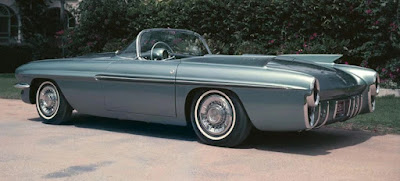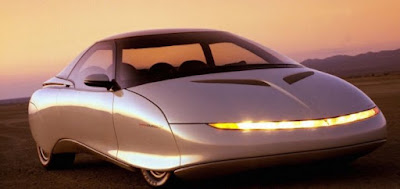EXTRA Time - In the ever-evolving landscape of automotive innovation, Ares Modena, a distinguished Italian automotive company, has once again captivated enthusiasts with the unveiling of their latest masterpiece. At the culmination of 2023, amidst eager anticipation, Ares Modena, founded by the visionary Dany Bahar, former head of Lotus, introduced the world to the hardtop version of their inaugural supercar - now adorned with striking new gullwing doors, marking the debut of the Ares S1 Gullwing First Edition.
 |
| The Ares S1 Gullwing First Edition The Ares S1 Gullwing First Edition, presented in a special and limited capacity with only 20 units available, showcases a blend of exclusivity and innovation that sets it apart. (Picture from: MotorLegend) |
These doors, a marvel of design and engineering, heralded the debut of the Ares S1 unit featuring magnificent gullwing doors. This iteration, presented in a special and limited capacity with only 20 units available, showcases a blend of exclusivity and innovation that sets it apart. However, it remains undisclosed whether these units will accompany the previously unveiled S1 Spyder variant introduced in 2020 and the S1 Coupe variant with butterfly-door style, launched in 2021.
 |
| The Ares S1 Gullwing First Edition, now adorned with striking new gullwing doors, pays homage to the iconic Le Mans racers of yesteryear, marrying style with a nod to automotive history. (Picture from: MotorLegend) |
Beyond its aesthetic allure, these new gullwing doors pay homage to the iconic Le Mans racers of yesteryears, marrying style with a nod to automotive history. Crafted meticulously from lightweight carbon fiber, these doors contribute to the car's agile performance, weighing in at a mere 1,380 kilograms.
 |
| The Ares S1 Gullwing First Edition meticulously crafted from lightweight carbon fiber, contributing to the car's agile performance and weighing in at a mere 1,380 kilograms. (Picture from: TopGear) |
Under the hood, the Ares S1 Gullwing First Edition sheds 300 kilograms compared to its base model, the Chevrolet Corvette C8, enhancing its dynamic prowess. Powered by a robust 6.2-liter naturally aspirated V8 engine coupled with an eight-speed DCT dual-clutch gearbox, the Ares S1 Gullwing delivers a formidable 608 horsepower and 639 Nm of torque. Accelerating from 0 to 100 km/h in just three seconds, it boasts a top speed of 296 km/h, embodying the spirit of a speedster with a touch of subtlety in its design.
 |
| The Ares S1 Gullwing First Edition is powered by a robust 6.2-liter naturally aspirated V8 engine coupled with an eight-speed DCT dual-clutch gearbox. (Picture from: TopGear) |
The rear profile, reminiscent of automotive legends like the Chiron and the Porsche 918, coupled with an additional screen for the co-driver, exemplifies the meticulous attention to detail that defines the Ares S1 Gullwing First Edition. Every facet of this vehicle is a testament to luxury, performance, and aesthetics meticulously crafted to provide an unparalleled driving experience.
 As you envision cruising the streets in this futuristic marvel, be prepared for a sensory experience like no other. The Ares S1 Gullwing First Edition transcends the realm of mere transportation; it becomes a symbol of success, exclusivity, and individuality. It's not just a car; it's a statement of automotive excellence. *** [EKA | FROM VARIOUS SOURCES | ARES DESIGN | TOPGEAR | STUPIDDOPE | MOTORLEGEND ]
As you envision cruising the streets in this futuristic marvel, be prepared for a sensory experience like no other. The Ares S1 Gullwing First Edition transcends the realm of mere transportation; it becomes a symbol of success, exclusivity, and individuality. It's not just a car; it's a statement of automotive excellence. *** [EKA | FROM VARIOUS SOURCES | ARES DESIGN | TOPGEAR | STUPIDDOPE | MOTORLEGEND ]Note: This blog can be accessed via your smart phone.





































